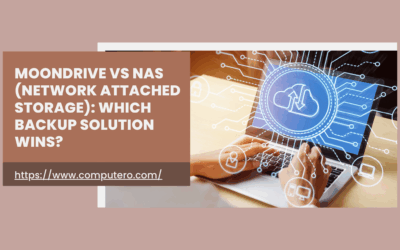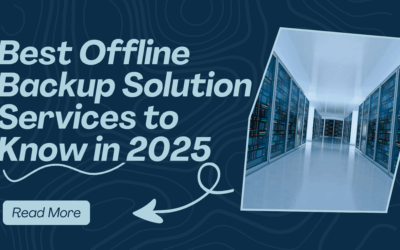As firms move further into 2026’s digital transformation era, the transition to cloud is no longer one of the ifs, but it is all about the whens. Cloud computing is about flexibility and cost-effectiveness, but it comes with some new risks associated with it in 2026.
This guide focuses on the top cloud security risks & solutions in 2026. Let’s take a look at them.
What is Cloud Security?
Responsibility for cloud security is shared by the cloud provider and the customer. The shared responsibility model is divided into the provider’s responsibility, the customer’s responsibility and service responsibility due to different cloud services associated with the models, such as cloud email.
The security concerns remain those of the provider being roughly in line with securing the infrastructure and patching or configuring the legacy physical network over which your computer setup, compute stance runs + where this storage is sitting.
Want a reliable Cloud storage solution?
You can contact Computero, which is the best in business, as well as a trustworthy option for your business.
Top cloud security risks & solutions
1- Cloud misconfigurations
Risk:
This is one of the leading top cloud security risks, which continues to be misconfigurations. A tiny mistake, like not configuring proper access permissions, can leak sensitive data to cyber attackers.
Solution:
- Occasionally, audit and check the cloud settings.
- Utilize automated tools to identify misconfigurations.
- Execute the least privilege principle.
- Use cloud security posture management to track and rectify the misconfigurations.
2- Uncertain APIs and interface
Risk:
Cloud security depends on the application programming interface (APIs). In this case, an interface is not provided, as they can be exploited in the form of data leakage.
Solution:
- Protect APIs with encryption.
- Track API traffic for suspicious activity.
- Use industry best practices for API security.
3- Insider threats
Risk:
Not all danger has to be external. It must also be from an internal source, such as an upset worker with rights to important systems, who can create havoc.
Solution:
- Deploy strong identity and access management.
- Observe the user’s behaviour.
- Run a background check of each user.
4- Data breach
Risk:
If it is a cyberattack or a hardware failure, data loss can be disastrous if you do not have a proper backup mechanism.
Solution:
- Self-operating regular backups.
- Keep backups in two distinct locations.
- Regularly check on the recovery process.
5- Lack of visibility
Risk:
Lack of visibility occurs due to uncontrolled data and increased exposure to third-party risks.
Solution:
- Deploy cloud access to discover and control the usage of unauthorized cloud resources.
- Develop an internal guideline around cloud security and file sharing.
6- Ransomware in the cloud
Risk:
Ransomware attacks are the most common type of attack found in cybersecurity. Attackers encrypt data in the cloud and demand a large sum of money in return to recover the hijacked data.
Solution:
- Implement an endpoint that protects all the cloud-connected devices.
- Patch the system regularly.
- Isolate the infected system to prevent further spreading.
7- Non-compliance with its regulations
Risk:
Data protection regulations like HIPAA are in place, and non-compliance can result in reputational loss.
Solution:
- Be aware of regulation updates.
- Use cloud risk management services which provide compliance.
- Keep audit logs and records secure.
8- Shortage of Hybrid Cloud security skills
Risk:
Demand for skilled cloud professionals continues to hamper organizations ability to defend against the vulnerable threats.
Solution:
- Users need to be trained in hybrid cloud skills and should be able to handle the ongoing threats.
- Firms should upskill their team members and invest in managed Cloud Risk Management programs to bridge the talent gap.
9- User account hijacking
Risk:
User account hijacking is a common attack in the cloud security threat section. Top Cloud Security solely relies on credentials for authentication.
Solution:
- Storing passwords in a safe place.
- Don’t use weak passwords while logging in to an important website.
10- Third-party integration:
Risk:
Cloud environments rely on third-party integration, which introduces risks if they follow weak security protocols.
Solution:
- Perform a security assessment and vendor risk evaluations before you connect any service to your cloud platform.
- Monitor third-party activity and throw away any unused connections from the system.
Business practice to stay secure
You need to adhere to some top Cloud Security business practices to stay secure in 2026:
- Use Cloud Security Posture Management: Track cloud configurations and make sure compliance is ok with best practices.
- Audit often: Do a review of the configuration and use it to identify potential risks before the issue arises.
- Train employees: Aware employees on cloud security.
Conclusion
The future of Top Cloud Security measures demands security strategies that develop with complex infrastructure and clever cyber threats. At Computero, we help businesses to create a safe, scalable, and obedient cloud environment to suit their business goals and industry needs.




